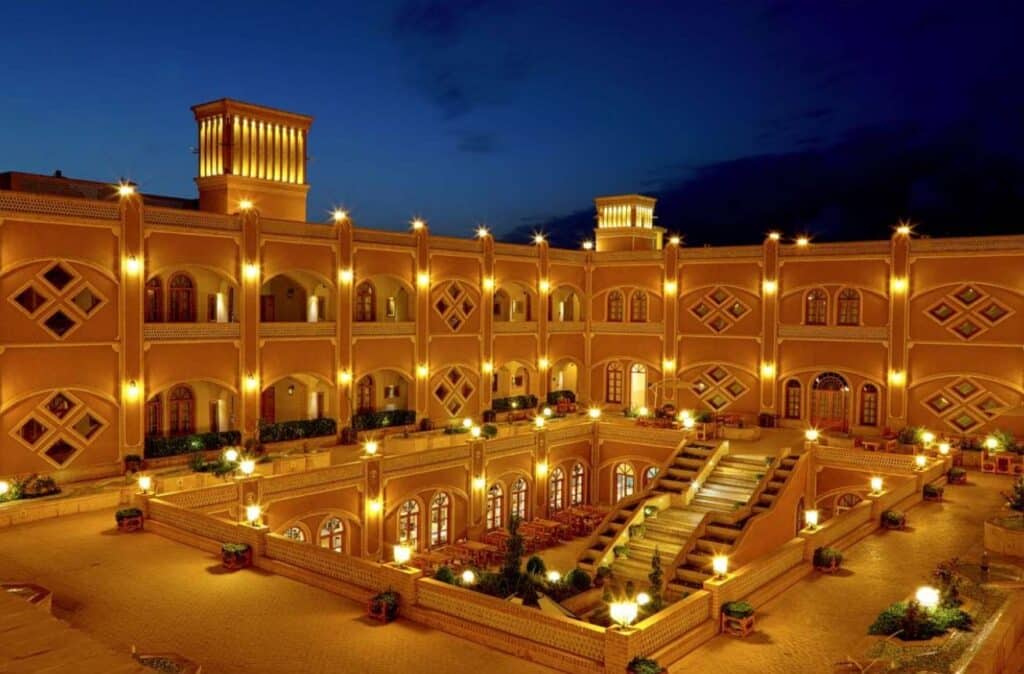
Narin Castle locally known as Narnej Qal-e, located in Meybod Near Yazd, Iran, is a historic edifice of significant archaeological and architectural importance.
This ancient fortress, with a remarkable 6,000-year history, ranks among the world’s oldest governmental strongholds. Its architects and builders applied fundamental principles to craft a robust, lasting structure. They set an exemplary legacy for future generations.
The castle’s defense architecture is notable. It features five barriers and a secure gate. Together, these elements form a complex and unique construction.
Contents
The History of Narin Castle in Meybod
Narin Castle in Meybod has a storied past that historians estimate dates back between 6,000 and 2,000 years. During the early Islamic period, the castle highly valued and regarded as a strong, impenetrable stronghold against enemies.
Architecture experts believe that builders did not construct Narin Castle on virgin land. They find evidence of earlier architecture in the lower layers and parts beneath the northern wall and the royal quarters.
Builders constructed these structures on even older remnants. Traces of burning, ovens, and Iron Age pottery under the mud-brick constructions show this.
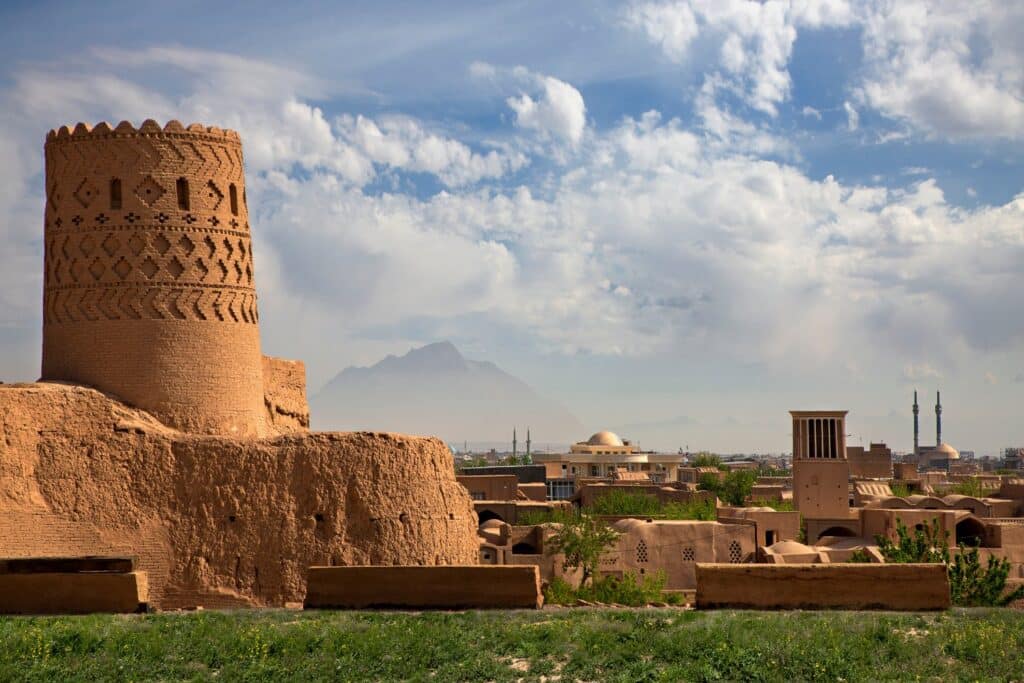
This historic building seems to have undergone multiple renovations over different periods.
This historic building has seen many renovations over different periods. The lower sections remain mostly unexplored or inaccessible. Archaeologists believe the upper mud-brick structure dates to the Sassanian era. This supported by finds like Sassanian seals and Pahlavi inscriptions.
In the early Islamic period, people lived in the castle. Architectural elements from the 4th and 5th Islamic centuries are visible in the complex.
Repair and construction at Narin Castle likely ended during the Muzaffarid dynasty’s reign. This is evident in the royal quarters, common areas, towers, walls, and moats. However, architects think these restorations lacked proper principles, leading to unstable structures. This is seen in the piled walls and mud bricks.
The Architecture of Narin Castle in Meybod
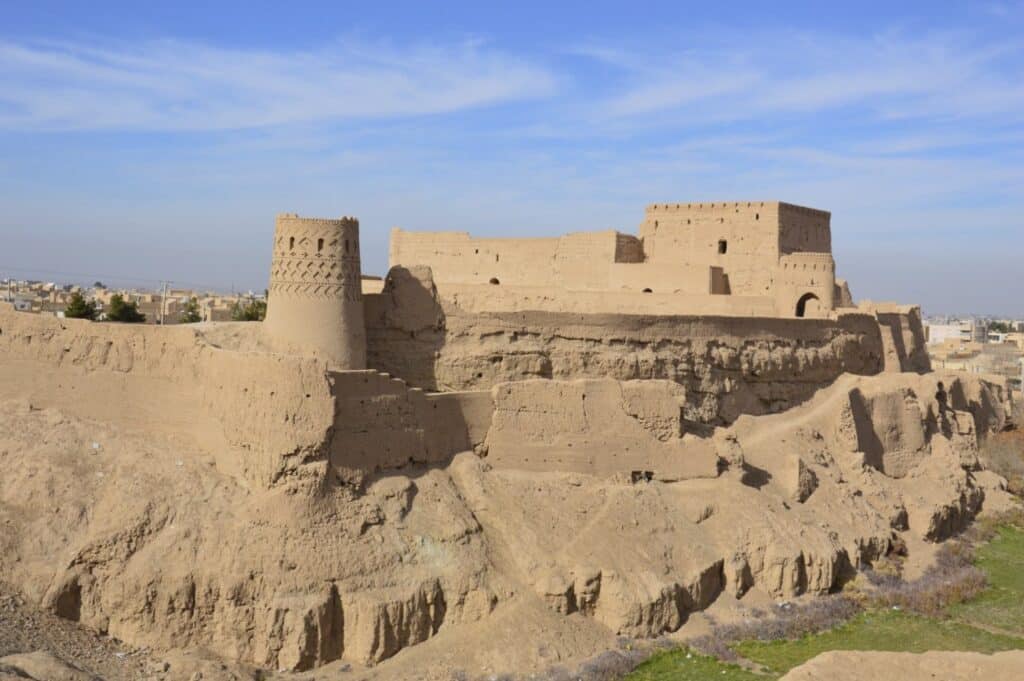
Narin Castle’s Architecture is a testament to ancient Iran’s construction ingenuity. Locally called Dez Dalan, the castle was strategically built on a high hill. It offers a commanding view of Meybod and its surroundings.
Some architectural experts regard this massive edifice as one of the remaining mud-brick structures from ancient Iran. Despite its age, dating back to the Parthian era and pre-Islamic times, its architecture has remained firm and stable.
The castle spans three hectares in the royal quarters. Some sources cite it as covering 15,000 square meters. This historic structure is believed to have encompassed the city area known as Shahrestan.
Seven-story Fortress
The castle was a seven-story fortress. It featured various towers, walls, and gates. This highlighted its complex and advanced architectural design.
Narin Castle comprises two main sections for living and governance, known as the upper and lower parts of the town. The lower section includes the common living areas, mosque, bathhouse, and passages, collectively referred to as Shahrestan in urban architecture.
However, today, no remnants of these structures are left. In the upper section, known as the ruler’s residence, buildings span three levels. This area starts from the third gate and spirals up to the royal quarters, known as Shah-Neshin Muzaffari. Light wells strategically placed in the upper parts of the walls provided illumination to the enclosed spaces.
The Various Sections of Narin Castle
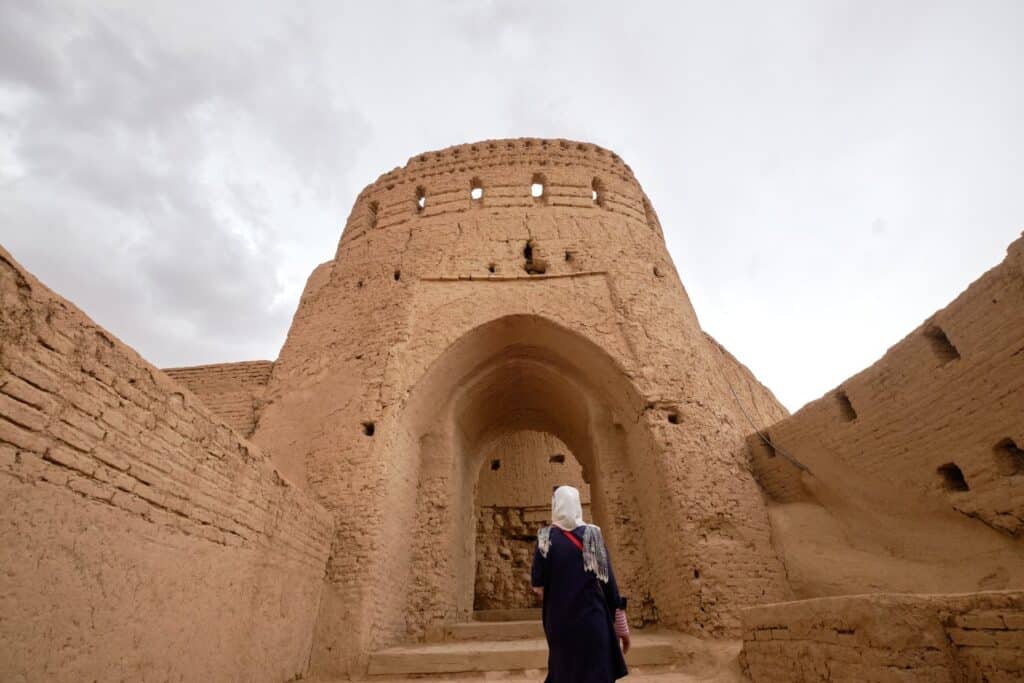
The Moat
This historic complex has a unique feature: the moat. It includes underground tunnels stretching up to a farsang, an old Persian distance unit. Like other castle towns in Iran, the moat was crucial for defense. It was designed to prevent invasions and attacks.
The Tower
Narin Castle in Meybod boasts four high circular towers. Unfortunately, only the central parts of these towers remain today.
The Rooms
Numerous interconnected rooms form another significant aspect of the castle’s sturdy architecture. Many of these rooms, especially in the lower levels and collapsed corridors, remain inaccessible.
Architectural experts think the castle began with the moat. It was then constructed upwards in five layers using mud-brick and clay.
The varying sizes of the bricks used in construction indicate different historical periods of building and completion. Some bricks, presumably from the Median era, measure 10x24x40 centimeters.
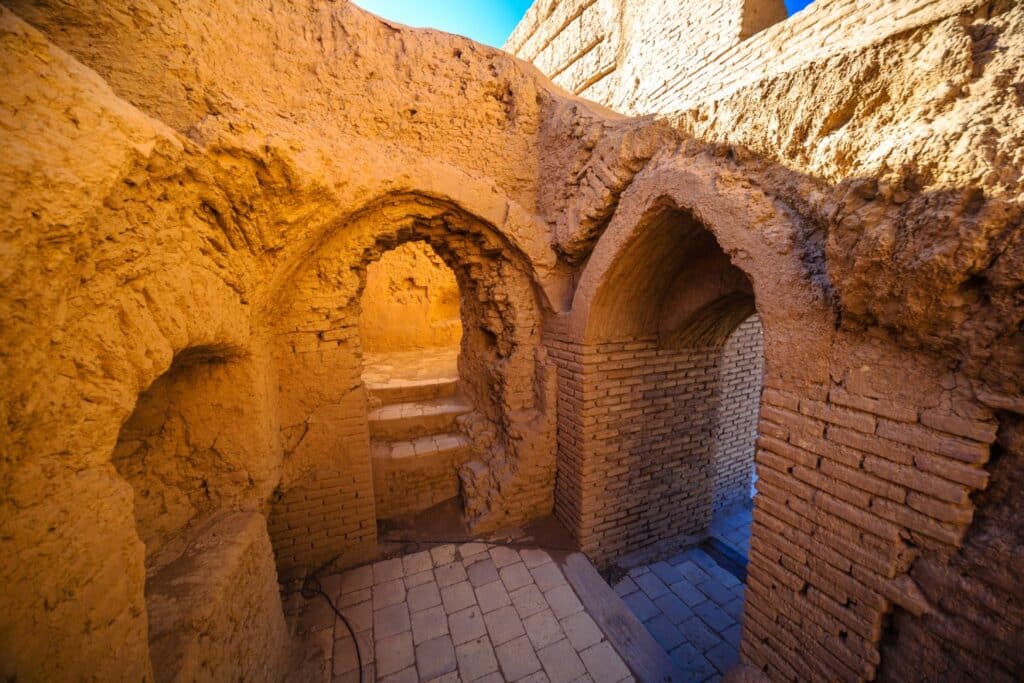
The Wooden Bridge
A wooden bridge was part of the castle. It was removed in 1343 of the Persian solar calendar during road construction.
This bridge, located on the western side, connected the castle to the town and positioned over the moat when needed.
The Entrance Gate
The entrance gate, guarded by two towers, is on the castle’s western side. It served for both traffic and protection.
The Well
An ancient, quadrilateral well in the castle signifies its long history.
The Underground Networks
The presence of navigable underground networks is a remarkable feature of this historical site.
Designed by architects from the past, these pathways served a crucial purpose. They were for securing essentials like water and food. Remarkably, no invader ever conquered these paths.
Some archaeologists estimate the history of habitation in this complex to be around 3,000 to 4,000 years before Christ.
Archaeologists suggest that this complex inhabited 3,000 to 4,000 years BC. Given this timeline, Narin Castle could be among Yazd‘s oldest signs of human civilization.
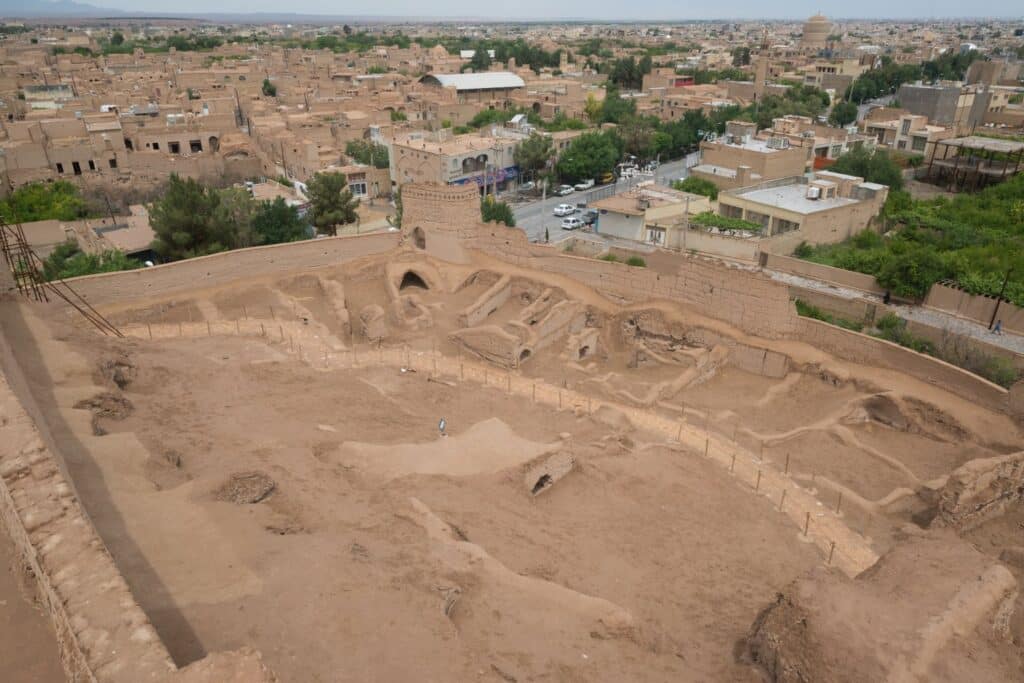
Historical Usage of Narin Castle
Narin Castle initially constructed for military purposes and witnessed numerous wars throughout history. However, some speculate it might also have served as a temple.
Given the risks during foreign invasions, extensive underground pathways built not only for movement but also to secure life essentials. The complexity and secrecy of these routes ensured they never conquered during any attack.
How to go to Narin Castle?
Meybod, a city located 52 km from Yazd, is accessible within about 1 hour by taxi from Yazd. Once you enter the ancient city of Meybod, you’ll reach the municipal square. Then, proceed onto Imam Khomeini Street, where you will see the towering structure of Narin Qale (Narin Castle).
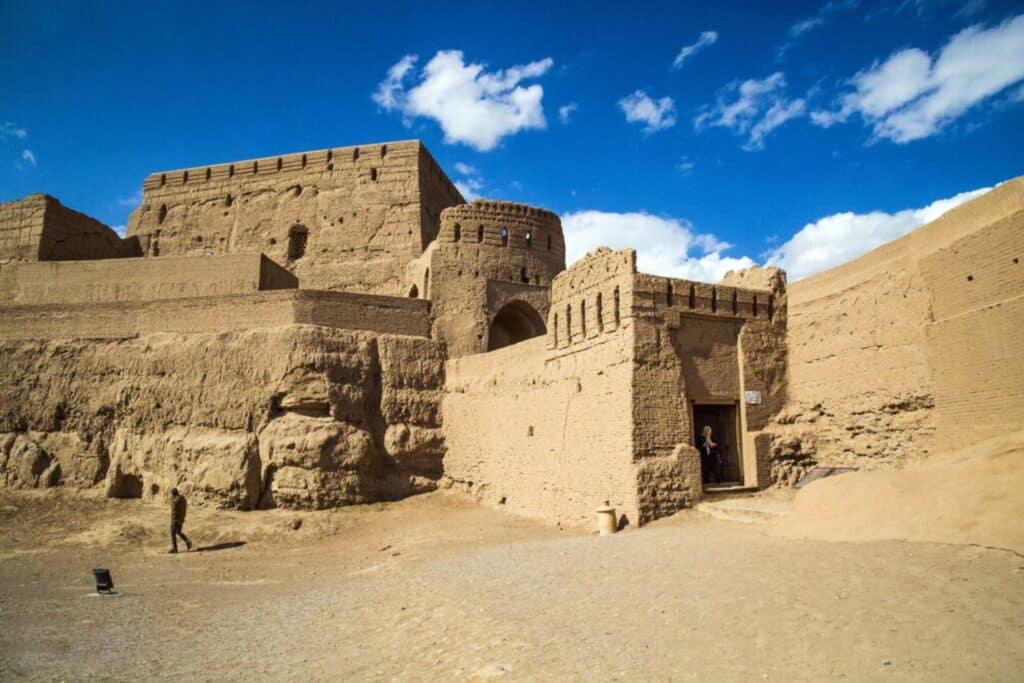
Wrapping Up
Narin Castle in Meybod stands as a remarkable example of ancient Iranian architecture and culture. This historic fortress displays a strategic design. It features a protective moat, strong towers, and complex underground tunnels. The castle’s structure reveals a story of evolution. It has varied brick sizes and styles, indicating resilience through ages. This spans from the Median dynasty to Islamic conquests.
Today, Narin Castle remains a site of majesty and intrigue. It fascinates visitors with its mysterious tunnels and enduring towers. The castle holds stories within its ancient walls. It’s one of Yazd’s oldest monuments, representing Iran’s historical and architectural splendor. The castle invites travelers and historians to explore its depths. It serves as a gateway to the past and a source of inspiration for future generations.
